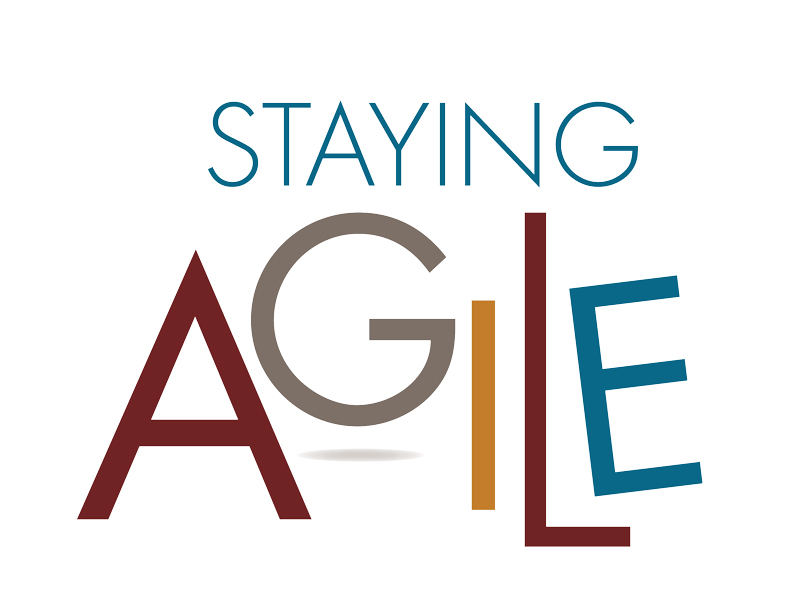In a constantly disruptive market, most organisations desire agility — the kind that start-ups are born with. But replicating the agile nature of a young start-up with about five people is not easy as organisations begin to grow. That’s when agility collides with the need to scale the business.
Many start-ups still lack a clear framework for scaling without losing their ability to stay nimble and continue to disrupt their field. As Harvard Business Review notes: “Scaling doesn’t mean that ventures should disavow their start-up identities and embrace large-company dogma once they’re poised for growth. But those prepared to manage that growth — and to learn new ways of operating and behaving — stand a much better chance of making it in the long term.”
Agility is not new; it’s a vital part of start-ups and the entrepreneurial DNA. Most start-ups are born with a culture of agility, a desire to be responsive and evolve with the changing needs of customers and the market.
But for many growing start-ups, it’s often a struggle between maintaining agile development and scaling the business. Very few manage both well.
Accelerated organisational growth often puts much of this agility bravado on the back burner, with focus shifting to a fixation on plans and procedure to structure the scaling process, or trying rapid adoption with unnecessarily costly repercussions.
It’s a paradox, as the lack of corporate structures within start-ups is their common appeal — the reason big conglomerates like GE, IBM and many others look to work with, integrate
and purchase dynamic start-ups. Tomasz Tunguz, a former Google employee and now a venture capitalist at Redpoint Ventures, notes that when a business gets to about eight people, a leader must emerge to shepherd the growing team so that the first management layer is created. This is a pivotal point where the leader can shape and maintain agile development or start fixating on plans and goals.
Most start-ups are born with a culture of agility, a desire to be responsive and evolve with the changing needs of customers and the market.
The need to stay agile is not just from development and growth perspectives. With futurists such as James Canton indicating that at least 90% of millennials prefer working at a start-up to a conglomerate, the war for talent is real. To get the best, you have to be relevant and current.
An analysis of successful companies such as Google, Facebook, Apple and others shows that with growth, their focus doesn’t shift too heavily into structures and patterns. Instead, they establish a climate for continuing innovation and responsiveness
to market trends and testing or implementing fresh ideas. Continuous agile thinking is their regular routine.
Here are a few examples of start-ups that have successfully maintained their agility.
- In 2011, Facebook launched a coupon service as competition to Groupon. It closed after four months. Likewise, it tried a string of other failed experiments. But this hasn’t stopped the company continuing to test. Testament is Facebook’s significant investment in virtual reality (VR) before many people realised its potential.
Not all experiments will work for start-ups. But the successful, nimble ones are those that have the ability to evolve quickly if things don’t work. Agile development also helps start-ups minimise risk by testing small and then adapting quickly.
- After adding more than 600 million users between 1 April 2009 and 28 December 2011, Facebook’s growth rate slowed. Users, especially the younger ones, were trying new and different things. It comes as no surprise then that Facebook purchased Instagram in April 2012 to capture the growing market of people engaging with pictures.
An agile start-up leader is one who can continuously and deeply review the market for change and then quickly work with the team to translate it into opportunities.
- Surrounding yourself with the right team is of utmost importance — everything hinges on the ability of the team to move quickly and still maintain their passion for the endgame. Discussing its entry into the challenging Columbian market, Virgin talks about using ‘smart agility’ and keeping the fun in everyday activities, despite growth.
Virgin notes that it’s easier to cheer up a bunch of people who fit into a minivan than hundreds spread over many facilities and cities. In chasing big dreams, it’s important to remember that often the small things make a big difference to people.
- “Stay hungry. Stay foolish,” Steve Jobs famously said this at his speech to students at Stanford University in 2011. Maintaining the drive and passion that sees entrepreneurs start in the first place will ensure continuing focus on aspirational purpose instead of getting caught up in specific goals.
Agile organisations such as Apple have dynamic strategies that evolve in response to change and have a sense of purpose beyond profitability.
A final thought to consider: agility is not merely the ability to change or adapt. It’s the ability to accept change and deal with it quickly in the best interests of the start-up, and in a way that will make a difference. As Martin Luther King once said, “If you can’t fly, then run; if you can’t run, then walk; if you can’t walk, then crawl. But whatever you do, you have to keep moving forward.”







